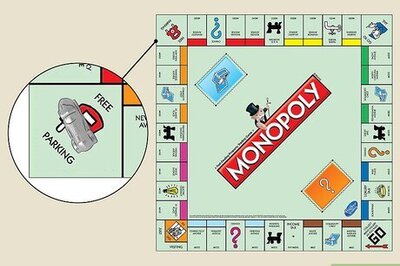
views
New Delhi: The air pollution levels in Delhi are showing no signs of decreasing. High temperatures have doubled the ozone levels over permissible limits in some parts of the city in the last 10 days.
Ozone causes inflammation in the lungs and reduces lung function. It also causes chest pain, coughing and makes diseases like asthma and bronchitis worse. Environmental scientists have been concerned about the spike in the level of ozone gas in the last few years.
Delhi has been ranked the worst polluted city in the world by the World health Organisation. The list also contains names of 13 other Indian cities.
With increasing temperature, the toxic ozone levels, which cause a number of health problems especially for asthmatics, have breached the permissible limits in the city, the MET department today said.
The level of toxic ozone in the national capital was highest in 2015 during the last two weeks when the maximum temperatures hovered above 40 degrees Celsius. Surface ozone increases due to high temperature coupled with high levels of carbon monoxide and nitrogen oxide.
Normally, Delhi's air quality problem is mainly due to particulate matters such as dust, dirt or smoke and not so much because of gaseous pollutants, unlike in the western countries where surface ozone pollution is a major issue.
"However, with rising temperature, the level of toxic ozone in Delhi has shot up and was the highest during the last two weeks in 2015. In some areas of Delhi NCT, surface ozone (8 sunlit hour average) touched as high as 120 ppb (part per billion), which is classified as poor in Air Quality Index," Gufran Beig, Project Director, System of Air Quality and Weather Forecasting Research (SAFAR), said.
SAFAR, which facilitates information on air quality, weather and radiation (ultraviolet index), operates under the aegis of Indian Institute of Tropical Meteorology (IITM), an autonomous body under the Ministry of Earth Sciences. The permissible limit is 50 ppb (8 hour day average).
"There is huge variability from one location to another within Delhi among 10 SAFAR stations, which is understandable as NOx (nitrogen oxide) level is highly variable along with CO (carbon monoxide)," Beig said.
Delhi University (North Campus), Dheerpur and Aya Nagar recorded the maximum levels of ozone with a peak of 120ppb at Dheerpur on May 27, which was the worst ozone day in Delhi. The area around Pusa recorded minimum level of around 60-80 ppb where temperature is almost 3-4 degrees less.
"Elevated level of poor ozone will prevail for next two days and thereafter, it will start descending as cloudy conditions are likely to prevail on May 31, followed by light thunderstorm," Beig said, adding, ground-level ozone can result in a number of health effects to a common man.
Some of these effects include coughing, throat irritation, pain, burning or discomfort in the chest when taking a deep breath, tightness in the chest, wheezing or shortness of breath and inflammation of airways. In addition to these effects, ozone can make asthma symptoms worse, Beig added.
The air quality in the city and the country is also affecting the health of children. A study done by Kolkata-based Chittaranjan National Cancer Institute even revealed that out of the 11,000 school going children in Delhi, 43.5% suffer from "poor or restrictive lungs", 15% complained of frequent eye irritation while 11.2% of complained of nausea and 7.2% of palpitation.
It is not just the children who are affected, data from major hospitals shows that Delhi has lost the gains it made after switching to CNG. The number of cases though went down initially saw a major spike after RSPM level rose to 316 in 2014 from 161 in 2007.
(With PTI inputs)


















Comments
0 comment